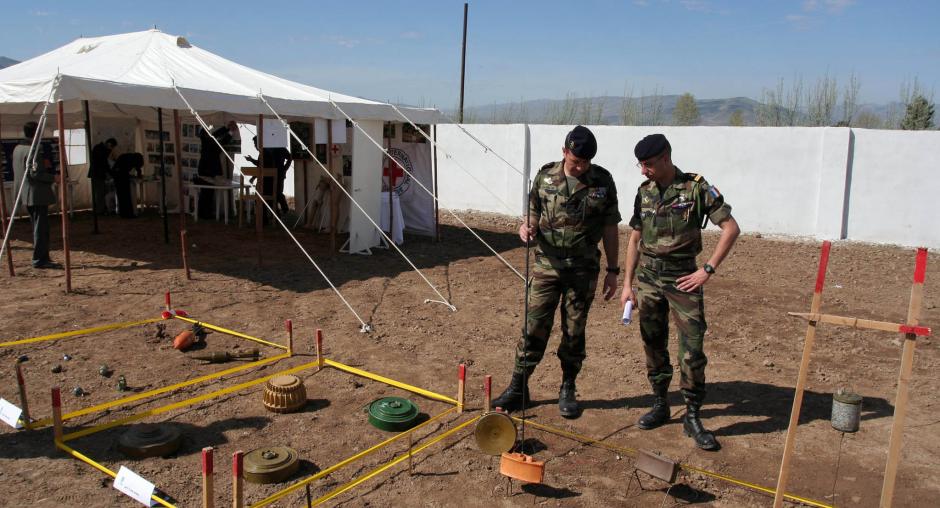Boost for mine detection in Tajikistan - OSCE, UN open dog training centre

DUSHANBE, 4 April 2006 - A new centre for training dogs that will help detect landmines opened today in Rudaki, in the barracks of an Engineering Battalion of the Tajik Defence Ministry, some 15 km from the capital Dushanbe. It will have kennels and a training area run by Tajik military experts.
The new facility, created with the help of the OSCE Centre in Dushanbe, the United Nations Development Programme Office in Tajikistan and the Tajik Mine Action Centre, opens on the International Day of Mine Action.
"The civil war in Tajikistan that ended in 1997 left a lethal legacy - nearly 100,000 landmines," said Ambassador Alain Couanon, Head of the OSCE Centre.
"People in rural areas suffer the most, because the land they live and work on is infested with devices which kill and maim. From 2004 to 2005 39 people were killed or injured in Tajikistan. However, with enough help provided, Tajikistan can achieve a mine-free status in the next five years, rather than decades."
The new facility was built with the financial support of the OSCE, in particular with donations from several participating States, including Canada, France, Germany, Italy, Norway, Sweden, Switzerland, the UK and the United States. The United Nations Children's Fund and the International Committee of the Red Cross also contributed to the cause.
It is a joint UN-OSCE project, part of the OSCE Mine Action Programme which started in 2003.
In 1999, Tajikistan acceded to the 1997 Convention on the Prohibition of the Use, Stockpiling, Production and Transfer of Anti-Personnel Mines and on Their Destruction, also known as the Ottawa Convention or Mine Ban Treaty. Some 150 countries are now parties to the Convention, which is the most comprehensive international document for eliminating anti-personnel mines in the world.
